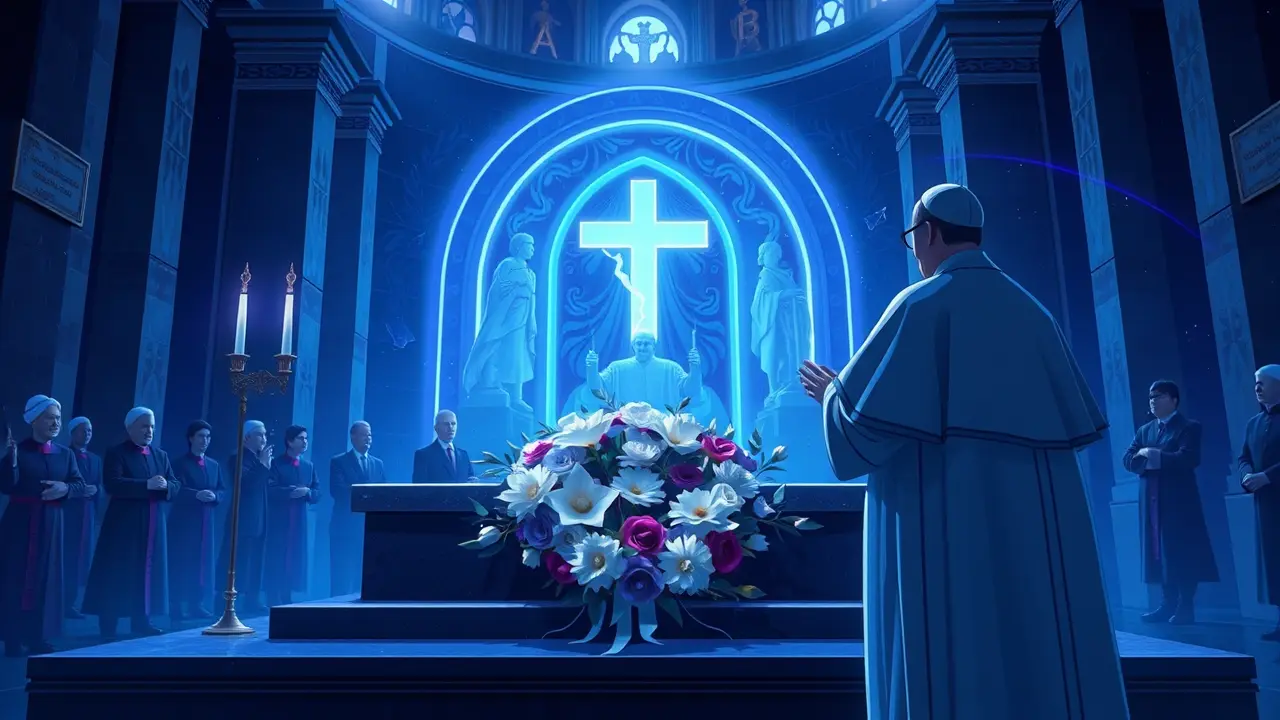
Politicsgovernments & cabinetsLeadership Transitions
Pope Leo XIV Honors Predecessor at St. Mary Major Basilica.
RO
Robert Hayes
8 hours ago7 min read3 comments
In a solemn act of ecclesiastical continuity that resonated with the weight of centuries, Pope Leo XIV made a deliberate pilgrimage to the Basilica of St. Mary Major in Rome, offering prayers and laying a wreath of white flowers at the tomb of his predecessor, Pope Francis.This gesture, occurring just one day after the annual commemoration of the faithful departed, was far more than a routine diplomatic nicety; it was a powerful piece of political and spiritual theatre, steeped in the complex history of the papacy itself. The location is profoundly symbolic.St. Mary Major, or Santa Maria Maggiore, is one of the four papal major basilicas and holds the title of 'Salus Populi Romani' – the health of the Roman people.It is a site where history breathes, where popes have for millennia sought solace and made pivotal declarations. By choosing this venue for his tribute, Leo XIV was consciously aligning himself with a lineage that stretches back to the earliest days of the Church, invoking a sense of permanence and tradition in a world often defined by rupture.The timing, immediately following the Day of the Dead, adds a layer of poignant reflection on mortality, legacy, and the fragile bridge between the living and the dead within the highest echelons of spiritual power. We must consider this act through the lens of historical precedent.One is reminded of Pope John XXIII’s visit to the tomb of Pope Pius XII, a gesture that sought to heal divisions within the Curia, or even further back, the complex relationships between Renaissance popes and their predecessors, often fraught with familial and political rivalries. In the modern context, where the papacy of Francis was itself a revolutionary force—challenging established norms on everything from economic justice to ecological stewardship—this public homage by Leo XIV can be interpreted as a strategic consolidation.It suggests a desire not to repudiate the Francis era, but to absorb its popular appeal while potentially steering the Barque of Peter onto a course that may recalibrate its emphasis. Was Francis a disruptor whose changes needed gentle tempering? Or was he a prophet whose vision requires faithful implementation? Leo XIV’s floral offering silently poses these questions to the world.Analysts watching the Vatican’s intricate dance of power will be scrutinizing the subtleties: the composition of the floral arrangement, the specific prayers uttered, the body language exhibited. Every detail is a datum in the unspoken narrative of where this new pontificate intends to lead over a billion Catholics.The consequences are manifold. For the conservative wing of the Church, it may signal a reassuring continuity of respect for the office, even as policy directions may shift.For progressive factions, it offers a sigh of relief that the legacy of a transformative pope is being honored, not erased. Internationally, for countries from Argentina to the Philippines, where Francis’s populist touch resonated deeply, the act serves as a message that their pope has not been forgotten. Ultimately, this visit to the tomb is a masterclass in the soft power of symbolic action, a moment where the past is invoked to shape the future, and where a simple gesture in a Roman basilica echoes across the global stage, revealing as much about the new pope’s strategic intentions as any encyclical or synod could.
#featured
#Pope Leo XIV
#Pope Francis
#Vatican
#Catholic Church
#leadership
#tradition
#tribute
Stay Informed. Act Smarter.
Get weekly highlights, major headlines, and expert insights — then put your knowledge to work in our live prediction markets.
© 2025 Outpoll Service LTD. All rights reserved.